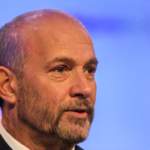How To Calculate Operating Income - The Full Guide
Keeping track of the financial health of your business can be a tricky task, even for the most accomplished business owner.
It is a complicated process, and if the eye is taken off the ball for even a moment, there can be any number of avoidable problems that could come your way.
This is true when it comes to calculating the operating income of your business. But what exactly is operating income?
Also read: How To Prepare Your Accounts For New Hires

What Is Operating Income?
In simple terms, operating income describes the earning ability of a business upon the examination of its operations and services.
It takes into account the primary activities the company does, and leaves out any additional streams of revenue that might not be relevant to the daily practices of the business.
This could be manufacturing, and if this was the case, then the act of producing and selling products (or more specifically the money earned) would be the operating income.
Non-Operating Expenses
These represent income sources which aren’t related to the everyday company activities. This could be a one off payment, or an unusual business deal that doesn’t usually reflect what the company does.
What Affects Operating Income?
Predictably, a higher output would be a key factor in increased operating income. The same could be said for a higher sale price, although this is a less predictable way of increasing sales, as customers could be dissuaded by the price tag.
Set contracts are how most companies achieve an income. This is especially true in the manufacturing world, where companies develop business relationships with retailers who sell their manufactured products.
These relationships can be over a number of years, and establish a pattern of sales and returns that are beneficial for both parties.
Supply and demand is ultimately a deciding factor.
This can be separated into needs and wants. Needs are vital, so if you are manufacturing something that people need, then income will remain at a constant or increase. Manufacturing luxury items is less of a sure thing, as these are the first things many consumers will drop during times of financial hardship and uncertainty.
Also read: 12 Best Finance Podcasts For Your Savings

How Do We Calculate Operating Income?
Operating income is located in the income statement. Within this statement, the cost of goods sold (or the value of all finished goods in their final forms) is subtracted from the generated revenue to find the gross profit.
The next step is to subtract the operating expenses from the gross profit. This refers to the paying of staff, the rental of premises, the utility costs therein, and the cost of materials.
Once all of these things are accounted for and subtracted, the remaining figure is the operating income. To make things simpler, you can see the process in the below equation:
Operating Income = gross income - operating expenses.
Further Examples
To make it even simpler, let’s use an example to show how this whole thing works.
Let’s say there is a person named David who owns a company which manufactures sneakers. David wants to take out a business loan from the bank to fund some renovations he wants to make to his existing premises, but to do so he needs to present his operating outcome to the creditors.
Upon reviewing his finances, David sees that his company made 100,000 in revenue last month.
The rest of his expenses included:
-
$1,500 in utilities.
-
$45,000 in employee wages.
-
$3,500 in insurance.
-
$3,000 in vehicle payments.
-
$4,000 in property upkeep.
-
$500 in office supplies.
-
$3500 in vehicle repairs.
-
$10,000 in COGS (cost of goods sold).
Taking this information, and putting it into the above equation of “revenue - COGS = gross income”, this would look like:
$100,000 - $10,000 = $90,000
This means that the gross income of David’s sneaker business is $90,000 dollars. Next we need to identify the operating expenses. On this list, items 1-6 are all operating expenses, whilst the $3500 for vehicle repair was a non-operating income, as it was irregular and unusual to the daily working expenditure of the business.
When all of the operating expenses are added together, this gives us a figure of $57,500. When we subtract this from the gross income ($90,000), we get the following equation:
$90,000 - $57,500 = $32,500
This means that in the last year, David’s business had an operating income of $32,500 dollars, allowing the investors or creditors to make an informed decision going forward.
Also read: Why Pay Stubs Are Important At Tax Time
Why Is Operating Income Important?
Operating income is important because it separates the operating and non-operating incomes, and allows outsiders (and company employees) to clearly see and understand how the company makes money.
Potential investors might use this to see the potential trajectory of the company’s finances before investing their money. Similarly, creditors will check the company’s financial success before granting them a loan or a line of credit.
The higher the operating income, the more likely the company is going to meet its debts and pay them back, whereas a company with a low operating income is of higher risk, or even ineligible for loans or credit.
It is also important when examining the overall financial health of the business. Reading the bottom line figure on a statement isn’t really enough when it comes to proper business practice, and business owners will use this breakdown of their ingoings and outgoings to assess where changes need to be made to save more money in the future.
Also read: Why do Jobs Hold Your First Paycheck?

Final Thoughts
And there we have it, everything you need to know about operating income, the importance to the financial health of a business, and the way companies calculate said income to best understand this.
Hopefully this article has been beneficial to navigating the world of business finance. But remember, if you have any questions regarding the financial future of your company, there are professionals out there ready to help!
Our pay stub maker is a simple way to generate pay stubs online and it is very user friendly.
Also read: How to Review Your Paychecks Before Filing Income Taxes















